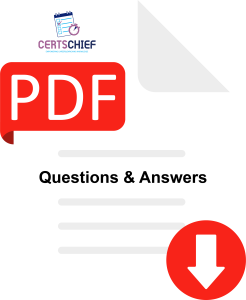Unlocking the Power of Python as a Scripting Language for Professionals
“`html Exploring the Versatility of Python as a Scripting Language Python, with its elegant syntax and flexibility, has emerged as a favorite among professionals across


$49.00
For aspiring pharmacists, the Pharmacy College Admission Test (PCAT) is a pivotal step on the journey to pharmacy school. The PCAT serves as a standardized assessment tool that measures a candidate’s academic readiness and scientific aptitude for success in pharmaceutical education. With a thorough understanding of the pcat pdf dumps format and content, aspiring pharmacy students can better prepare themselves to excel on test day.
The PC-AT exam plays a crucial role in the pharmacy school admissions process. It provides admissions committees with an objective measure of a candidate’s skills and knowledge in essential areas such as biology, chemistry, critical reading, and quantitative reasoning. Pharmacy schools use the PC-AT scores, in conjunction with other application materials, to evaluate an applicant’s potential for success in their rigorous programs.
The PC-AT exam is divided into several sections, each assessing different skills and knowledge areas:
1. Verbal Ability
This section evaluates a student’s language skills, including vocabulary, grammar, and reading comprehension. Success in pharmacy school requires strong communication skills, making this section a vital aspect of the PCAT.
2. Biology
Pharmacy education is deeply rooted in biology, and this section tests a candidate’s understanding of fundamental biological concepts. From cellular processes to genetics, a solid grasp of biology is essential for success in pharmacy studies.
3. Chemistry
A strong foundation in chemistry is crucial for pharmacists, who must understand drug interactions and chemical compounds. The chemistry section of the PC-AT assesses knowledge of general and organic chemistry principles.
4. Writing
Pharmacists often need to convey complex information in a clear and concise manner. The writing section of the PC-AT gauges a student’s ability to articulate thoughts effectively, an indispensable skill in the field.
5. Quantitative Reasoning
Pharmacy practice involves dosage calculations, data analysis, and statistical interpretation. The quantitative reasoning section evaluates a candidate’s mathematical skills and their application to pharmaceutical scenarios.
Effective preparation is key to performing well on the PCAT exam:
On the day of the PCAT exam, implementing smart strategies can contribute to your success:
The PC-AT exam is a critical milestone on the path to pharmacy school. By understanding its content, sections, and effective preparation strategies, aspiring pharmacists can confidently approach the exam and showcase their academic potential to admissions committees. Success on the PCAT not only opens the doors to pharmacy education but also sets the foundation for a rewarding career in the pharmaceutical field. Remember, preparation and determination are the keys to mastering the PC-AT and achieving your pharmacy school aspirations.
Twitter– https://twitter.com/certschief_com
You must be logged in to post a review.
“`html Exploring the Versatility of Python as a Scripting Language Python, with its elegant syntax and flexibility, has emerged as a favorite among professionals across
The Significance of Being a Databricks Certified Professional Data Engineer In the fast-evolving landscape of data engineering, staying ahead of the curve is crucial for
How to Prepare for the H19-435_V1.0 Exam Preparing for the H19-435_V1.0 exam can be a challenging task, especially for busy professionals with competing priorities. However,
The Importance of Effective Management in Planning and Inventory Management In today’s fast-paced business environment, effective management plays a crucial role in the success of
Elevate Your Career with ARA-C01 Exam Certification Reach new heights in your career by earning the ARA-C01 exam certification and opening doors to exciting opportunities!
Advancing Your Career with PL-200 Certification from Certschief If you’re seeking career advancement opportunities as a professional, exploring the PL-200 exam certification from Certschief could
Grab 16 USD Discount using Coupon: 5QV25AH7 Dismiss
Allison Roberts –
The helping material provided by CertsChief is a lifesaver. Complex concepts made simple.
Lucas Roberts –
Genuine exam guides from CertsChief are a reliable companion. They’ve never failed me in any certification pursuit.
Ethan Evans –
PCAT became achievable with CertsChief’s assistance. The study guide was well-organized, and the practice exams were reflective of the actual test.